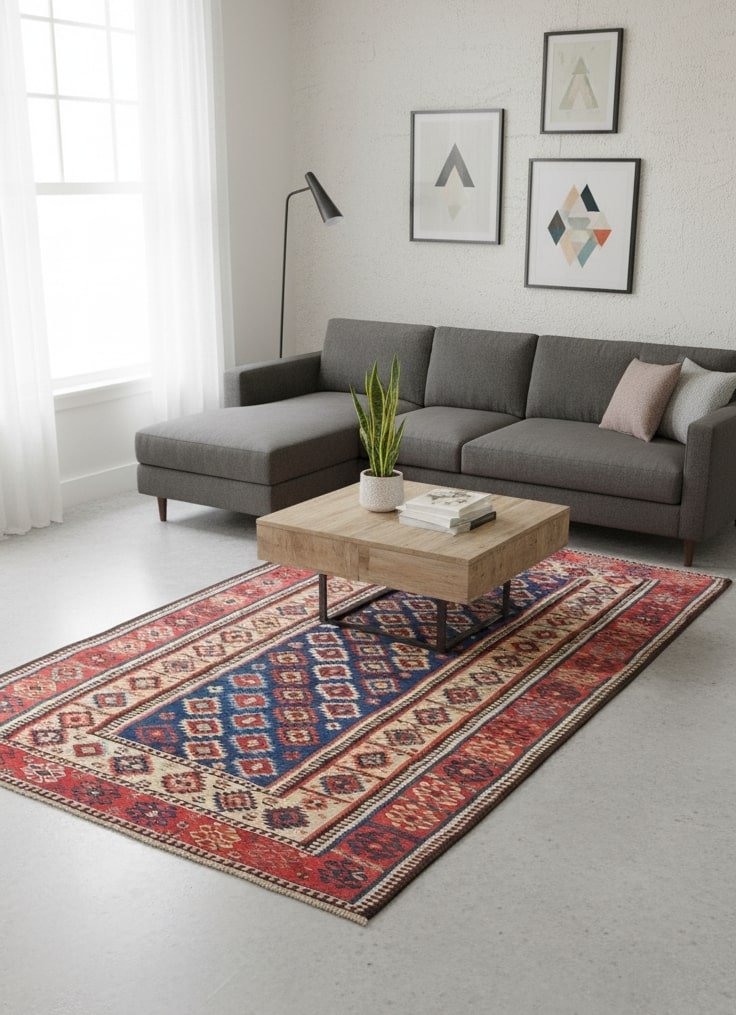Why are Persian Rugs So Popular?
Persian rugs are popular because they combine centuries of craft, rich designs, and long-lasting materials. They are both useful floor coverings and valued works of art.

- By Mehdi Sharafi
- Last updated: November 19, 2025
- Origin: Persian rug weaving dates back over 2,500 years.
- Reputation: Known for high quality, hand-knotting and natural dyes.
- Value: Many pieces become family heirlooms or museum items (one sold at Sotheby’s for USD 34,000,000).
A Short History of Persian Rugs
The craft began in the region that is now Iran during the Persian Empire. Over millennia, weaving techniques, patterns and dyes were refined and passed down through families. That long history gives Persian rugs:
- Cultural meaning and storytelling in their patterns
- Built-in authenticity that buyers value
- A connection to place – many designs are named after towns or tribes
Famous Persian Rugs
“The Ardabil Carpets“ are a pair of two of the most famous Persian rugs, both created in the 16th century.
- The larger carpet, measuring 34 ½ x 17 ½ feet and composed of about 26 million knots, is displayed at the Victoria and Albert Museum in London.
- The second carpet is part of the collection at the Los Angeles County Museum of Art (LACMA).
Read Also: Persian Rug Market in Iran
What Makes Persian Rugs So Special?
The below table explains why Persian rugs are special in straight forward way.
| Feature | Why it matters |
|---|---|
| Hand-knotting | Thousands of knots per square inch create fine detail and durability |
| Natural fibres | Wool, silk and cotton age well and feel luxurious |
| Natural dyes | Plant and mineral dyes give depth and patina over time |
| Design variety | Regional patterns (Heriz, Tabriz, Qashqai, Baluch) suit many interiors |
| Longevity | With care, Persian rugs last decades or centuries |
| Uniqueness | No two handmade rugs are identical – each is one-of-a-kind |
Quality factors that affect price and popularity
- Knot density (knots per square inch, KPSI): Higher knot counts usually mean finer detail and higher price.
- Materials: silk and high-grade wool cost more.
- Age and provenance: Antique Persian rugs with documented origin are more valuable.
- Condition and restoration: Well-kept antiques fetch higher prices.
Are Persian rugs expensive and why?
Yes, some are expensive but price reflects time, skill and rarity.
- A simple modern Persian rug can be affordable.
- Fine, hand-knotted or antique pieces command high prices.
- The most expensive Persian rug ever sold achieved tens of millions at auction (Sotheby’s, 2013 for USD 34,000,000).
Think of a good Persian rug as an investment: it can hold or increase in value and become a family heirloom.
Why musicians and performers sometimes use Persian rugs
You may wonder, why do musicians use Persian rugs?
Musicians often use rugs for practical and aesthetic reasons:
- Acoustic control: Rugs reduce echo and absorb sound.
- Grip for instruments and pedals: Prevents slipping on stage.
- Visual warmth: Rugs add visual character to a set or studio.
Frequently Asked Questions
What is a Persian rug?
A hand-knotted rug made in regions of Iran, often following local designs and materials.
Which country makes the best carpets?
Many countries produce fine rugs, but Persian rugs are celebrated for their history and craftsmanship.
Are Persian rugs in style?
Yes, they suit both classic and modern interiors thanks to colour, texture and pattern.
Final thoughts
Persian rugs are not just popular because of their aesthetic value and design. They are also world-famous for being high-grade and high quality. The quality of a carpet, whether antique or modern, is determined through many aspects, one of which is knots per square inch or kpsi. The higher the knot density, the better quality the rug is, in terms of density. These pieces of art are known to last for decades and centuries.
Each rug has its design, patterns, and colours. The art of Persian rug production is so popular worldwide that it has been used as the basis of most designs, patterns, motifs, and colors used in rugs produced in other countries today. This includes other Oriental rugs such as those from India, Pakistan, China, and Afghanistan.

